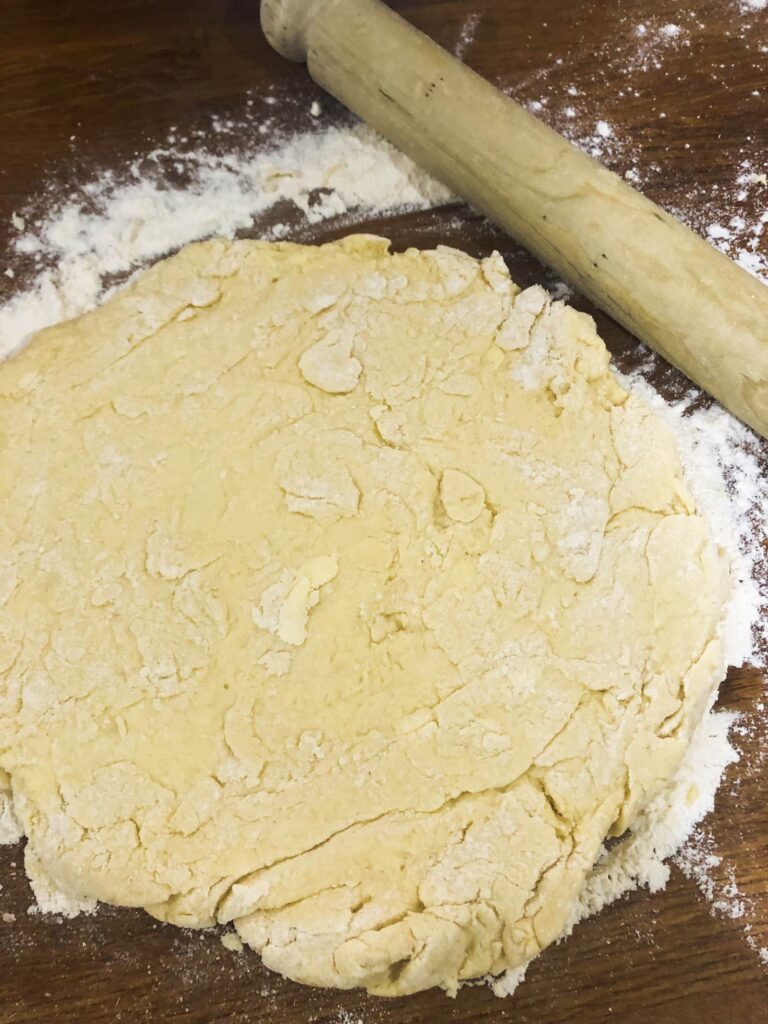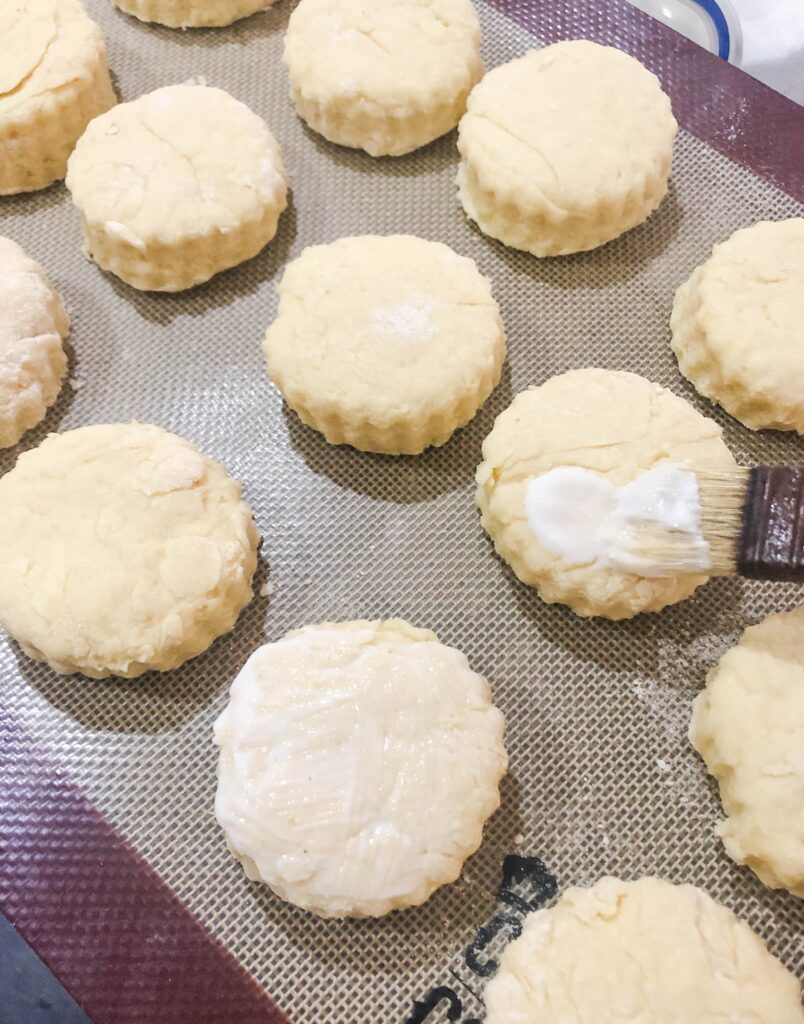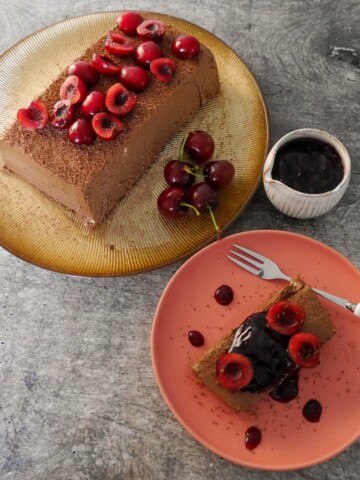My savoury buttermilk cheese scones are the scones I bake most often at home as all the family love them. These light and fluffy cheese scones appeal to those who, like me, love cheese, and the hint of mustard and cayenne pepper adds a lovely savoury note.

When I'm out for coffee my go to is almost always a cheese scone, so I decided it was time to come up with my own recipe. I've adapted this easy cheese scone recipe from my basic Buttermilk Scone recipe and added mature cheddar cheese.
I'm very fussy when it comes to what constitutes the best cheese scones. Firstly, I don't add sugar to a cheese scone, this is all about savoury flavors. Secondly I don't add baking powder as I don't enjoy the residue it leaves on your teeth.
This is the ultimate cheese scone recipe, as a strong mature cheddar cheese is added to the scone dough, and more is sprinkled on top of the scone so that it melts in the oven.
Why you will love this recipe:
- This is a twist on my Classic Buttermilk Scone, I show you how easy it is to make a savoury scone without the addition of sugar.
- Following a few basic guidelines, this recipe is fails-safe and it turns out great tasting, light and airy scones, time after time.
- This recipe can be easily doubled or halved to make a larger or smaller batch of scones.
Recipe ingredients

- Flour: I use self raising flour to make all scones. It saves having to add in extra baking powder.
- Seasoning: I use a combination of sea salt, cayenne pepper and English mustard powder to season and flavor these buttermilk cheese scones.
- Butter: I use unsalted butter, cold from the fridge and cubed. If you use salted butter, cut down on the salt in the flour.
- Cheese: I use a strong flavoured extra mature or vintage cheddar cheese, for both the filling and to top the scone. You can use whatever cheese you have to hand, but its best to use a sharp crumbly cheese, rather than one that is too greasy/oily.
- Buttermilk: I like to use buttermilk to make scones, but you can use whole milk if you prefer.
- Egg: I use 1 medium sized egg to make the scone dough.
How to make Buttermilk Cheese Scones


- Place the flour, salt, cayenne pepper and mustard powder into a large mixing bowl and give it a mix to combine.
- Add the cubed butter and lightly rub through your finger tips until the butter has been combined and the mixture resembles breadcrumbs.
- Stir through 75g of the grated cheese.


- In a separate bowl, whisk together the buttermilk and egg.
- Add the buttermilk mixture to the flour mixture and using your hands, or a knife gently bring it together.
- If the dough feels too dry, you can add a little extra buttermilk to the mixture.
- Bring the scone mixture into a ball, without needing, and turn onto a lightly floured surface.
TOP TIP: It's important not to overwork the scone mixture, otherwise you will have a heavy, dense scone.


- Roll gently until 3cm (1 ¼-inch) thick and cut into rounds using a 6.5cm (2 ½-inch) diameter pastry cutter.
TOP TIP: When cutting scones, push the cutter straight down without twisting it about. If you twist the cutter your scones won't rise as well.
- Place the scones well apart on a lined baking sheet.
- Brush the top of each scone with any buttermilk that you might have leftover in the carton (otherwise use milk).
- Sprinkle the top of each scone with some of the remaining cheese.
- Place on the middle shelf of a preheated oven at 220C/200CFan and bake for 18-20 minutes until the top is golden and the cheese bubbling.
- Remove from the oven and set the scones onto a wire rack for 10 minutes and serve warm.

How to store scones
Countertop: To enjoy them at their best, scones are best served warm, straight from the oven. However, you can store them for 1-2 days in an airtight container on the counter-top.
Freezer: You can also freeze cheese scones, just allow the scones to cool then place in an airtight container in the freezer for up to 3 months. When ready to enjoy, defrost and I recommend warming up a little in a hot oven.
Recipe variations
You can easily adapt the flavors in this ultimate cheese scone recipe. I often add some chopped chives, but don't be too heavy handed or your scones won't rise. Here are some other ideas:
- fresh herbs - chives, parsley, basil, thyme
- crispy bacon pieces, or chorizo
- sun-dried tomatoes finely diced
- smoked paprika, chili powder
- finely diced jalapeno peppers from a jar

Serving suggestions
I'm happy to serve classic cheese scones, straight from the oven with some salted butter and quite often some marmite or some of my Spicy Sweet Chilli Jam.
However, if you want something a little extra, try a savoury alternative to a cream tea. Swap the clotted cream for some cream cheese, and the jam for onion jam or savoury chutney or pickle, try my Pear & Walnut Chutney, or Spiced Pear & Apple Chutney.
Cheese scones also make a great accompaniment to a bowl of soup.

Useful hints and tips:
- Use a strong flavored, crumbly cheese like a sharp vintage cheddar. Don't be tempted to use an oily cheese or you'll end up with heavy, greasy scones.
- If adding extra flavors add them to the dry mixture along with the grated cheese, just don't add too much or the scones won't rise.
- I don't add baking powder to scones ... but if you prefer to add some baking powder to your scone dough to help it rise, then feel free to do so. However, don't be too heavy handed ½ teaspoon will be sufficient.
- Use cold butter straight from the fridge cut into cubes. Cold butter is easier to rub and work into the flour and will result is a lovely flaky fluffy textured scone. If you use warm butter you risk it melting in the oven before the scone has baked.
- Glaze the scones with leftover buttermilk or use milk or a beaten egg. This gives a great finish to the scones, just take care not to allow it to drip down the sides or the scone may not rise.
- Vegetarian: to make vegetarian cheese scones, ensure you use a suitable vegetarian cheese in place of the vintage cheddar.
- Allergy advice: these scones are soya free and nut free. For comprehensive and detailed allergy advice go to Allergy UK.

FAQs
I don't add baking powder to scones, instead I use self raising flour. However, if you would prefer to add a little to help the scones rise, by all means do so. However, I'd only add 1 teaspoon of baking powder, any more and you'll end up with an unpleasant aftertaste.
It takes practice (and failures) to produce a light scone with a lovely rise, particularly when not using baking powder. You need to ensure a consistent breadcrumb texture before incorporating your wet ingredients so you do not end up with hard, dense scones. So use cold butter with the flour and rub together to form a breadcrumb texture.
The second rule is to be light of hand when bringing the dough together. Start kneading the dough or being too rough and you'll end up with flat scones.
If you end up with hard scones, it's because you've been too heavy handed and overworked the dough. Don't knead the dough, instead use a light touch and only work the dough until it comes together enough to gently roll out.
Yes, absolutely. Use same quantity of milk as you would buttermilk.
If you don't have buttermilk, it's really easy to make by adding a teaspoon of lemon juice or white wine vinegar to some milk.
Pin the recipe

Additional recipe suggestions
Love scones, then try these great recipes:
- Buttermilk Scone
- Apple & Cinnamon Scone
- Pear & Ginger Scone
- Pumpkin Scone
- Courgette & Cheese Bread with Walnuts
If you enjoyed this bake have a look at my Fun Baking with Kids post, full of great recipe suggestions for all levels of baker.

Buttermilk Cheese Scones
Ingredients
- 250 g self raising flour
- 1 teaspoon baking powder
- large pinch salt
- ½ teaspoon cayenne pepper
- ½ teaspoon English mustard powder
- 50 g unsalted butter (cold from fridge and cubed)
- 125 g extra mature cheddar (grated, reserve 25g for topping)
- 100 ml buttermilk
- 1 medium egg
Instructions
- Preheat oven to 220C/200CFan/430F.
- Place the flour, salt, cayenne pepper and mustard powder into a large mixing bowl and give it a mix to combine.
- Add the cubed butter and lightly rub through your finger tips until the butter has been combined and the mixture resembles breadcrumbs.
- Stir through 100g of the grated cheese.
- In a separate bowl, whisk together the buttermilk and egg. Add the buttermilk mixture to the flour mixture and using your hands, or a knife gently bring it together.
- If the dough feels too dry, you can add a little extra buttermilk to the mixture.
- It's important not to overwork the scone mixture, otherwise you will have a heavy, dense scone.
- Bring the scone mixture into a ball, without needing, and turn onto a lightly floured surface. Roll gently until 3cm (1 ¼-inch) thick and cut into rounds using a 6.5cm (2 ½-inch) diameter pastry cutter.
- When cutting scones, push the cutter straight down without twisting it about. If you twist the cutter your scones won't rise as well.
- Place the scones well apart on a lined baking sheet.
- Brush the top of each scone with any buttermilk that you might have leftover in the carton (otherwise use milk). Sprinkle the top of each scone with some of the remaining cheese.
- Place on the middle shelf of the oven, and bake for 18-20 minutes until the top is golden and the cheese bubbling.
- Remove from the oven and set the scones onto a wire rack to cool for 10 minutes and serve warm.
Notes
• Please note that the nutrition information provided above is approximate and meant as a guideline only •






El says
Please put cups instead of grams
Lesley says
Hi, I'm based in the UK and most of my readers are also UK based so I use grams when baking. I don't convert to cups as I cannot then be sure of the accuracy of the recipe. However, there are online calculators to help you work the conversions.
Janice says
Such delicious scones. The buttermilk makes them really light and tender.
Lesley says
Thank you Janice, buttermilk really does give the lightest scones, I use it in all my scone recipes.